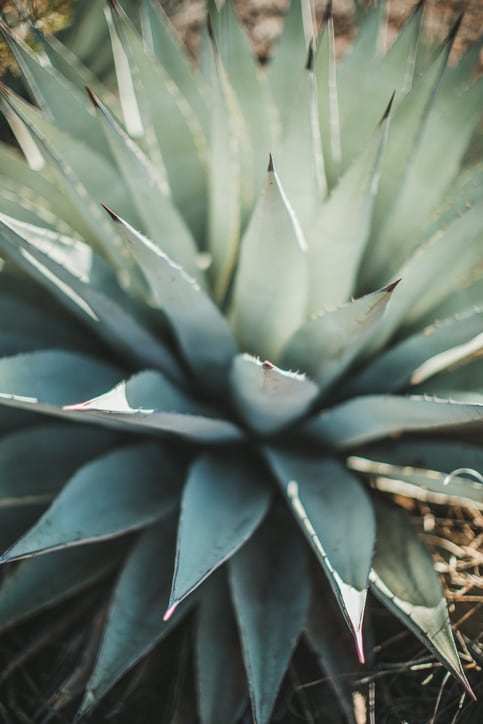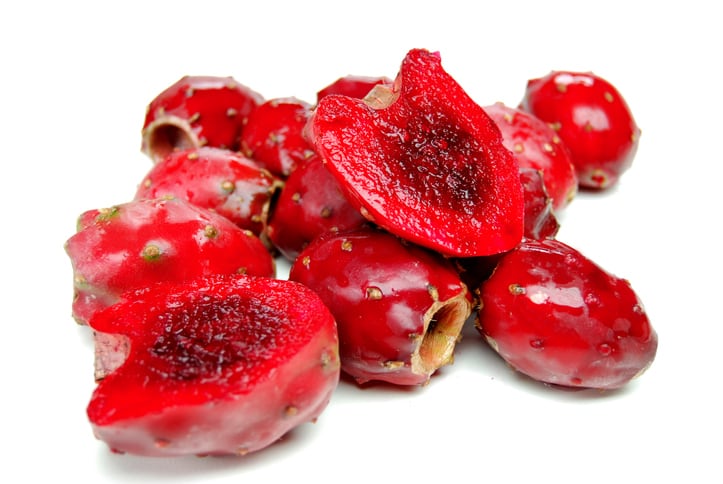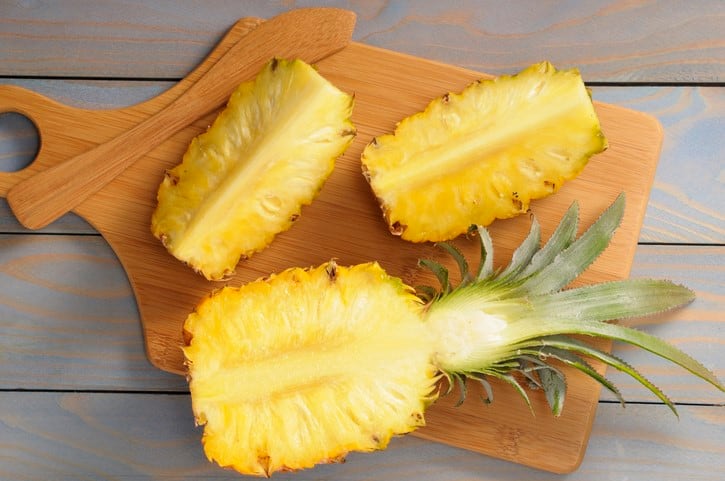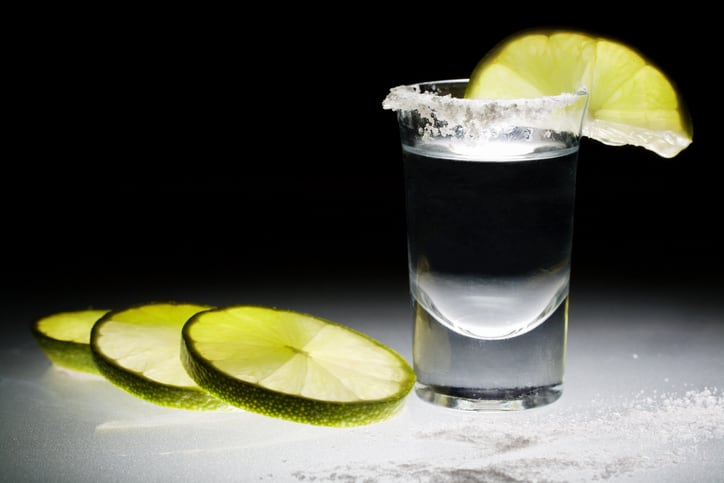With the globalization of food systems and dominance of big brands, the researchers fear that traditional and healthful beverages have fallen out of fashion and face local or broad extinction.
Nevertheless, today’s market shows potential demand for such beverages. Tepache (a fermented beverage made from pineapples), tesguino (an artisanal corn beer) and colonche (a red alcoholic drink made from prickly pear) have been making a comeback in Tuscon, Arizona ever since it became a UNESCO City of Gastronomy in 2015.
Meanwhile, traditional beverages are now being used by mixologists in Mexico to create novel cocktails.
And with today’s changing climate, there’s an increasing need for arid-adapted crops with highly-efficient water use: a challenge which Mexican plants such as agave and cactus are well positioned to meet. The base of Mexican cuisine also offers a reservoir of genetic resources such as plants, animals, fungi, and microorganisms such as yeast and bacteria: which could help create nutritious products and address food security.
Tracking down historic recipes
For thousands of years, Mexico’s home brewers, cooks, foragers and farmers have elaborated 16 distinctive sets of fermented and probiotic beverages from over 140 plants species and thousands of strains or yeasts and bacteria.
Using microbiological, ethnobotanical and genetic advances, an interdisciplinary team from five universities have now systematized information on the types and histories of traditional Mexican fermented beverages.
Their findings, published in the international journal Foods, suggest that cacti, agaves and cereal grains comprised the primary substrates of these traditional ferments, but in each region and locality, a distinctive set of plant roots, leaves, fruits and stems were added as fermentation catalysts, flavorants, colorants and stabilizers.
Across time, a large number of bacterial strains and yeasts – in addition to common brewer’s yeasts and water kefir grains – enabled the nutritional transformation of these raw materials into a wide array of unique nutritionally rich, probiotic beverages.
Agave and beyond
Mexico’s array of traditional fermented beverages include tepache, pulque, mescal, colonche, jobo or hobo, colonche, nawait, pozol, tejuino, tesgüino, piznate, taberna, cocoyol, tuba, Mexican palm wine, balché and xtabentún.

Researchers found 140 plant species used as the main substrates for fermentation or as promotors of fermentation. The most common – and best-known – are mescal beverages: agave spirits or agave distillates.
“Most of the current research is directed to study the mescal production process and its optimization. This is not surprising because of the national and international rising market boom of mescal," note the researchers.
“However, it is lower than research on tequila, which is the fourth largest export product of Mexico. After mescal, pulque is the most studied beverage, particularly biotechnological and management aspects involved in its production.”
Past pulque (fermented sap of the maguey plant), however, the interest in traditional fermented beverages is close to null, lament the researchers. “The remaining beverages are not only marginalized in markets, but also in the scientific agendas. Greater efforts to maintain them should be performed.”
The first step is to better understand these lesser-known beverages. This means deeper studies to identify, characterize and monitor the actual and potential production areas of such drinks.
“Such studies could also be the way to promote maintaining or the revival of these products. The loss of traditional food systems will result in decreasing culture-specific food activities, thus influencing the decrease of dietary diversity.
“Moreover, traditional Mexican fermented beverages could be part of touristic development, reliable small-scale food markets, and local health strategies, but most of them remain unexplored and some others are in danger of extinction.”
Traditional Mexican fermented beverages
Maize beverages
Maize has been used as a main or secondary substrate, most beverages being prepared with maize grains, including: atole, agrio, saká, tejuino, tesgüino, sendechó, chorote, and pozol.
Pox was usually prepared with maize stems as the main substrate, but sugarcane stem is more commonly used now. For processing most of these products, people employ specific races of maize; and the beverages receive different names according to the maize race and locality where they are produced.
Beverages produced with maize have a deeply and strong relationship with ethnic groups.
Agave beverages
The cluster of Agave beverages is a highly diverse group, with 68 agave species involved in the fermentation of pulque and mescal as the main substrate to produce both beverages. The fermented sap of A. salmiana is the most frequently employed to produce pulque and it is also added as an inoculum to other beverages.
Cacti beverages

Colonche is a traditional fermented beverage that can be prepared with fruits of at least 17 cacti species.
Colonche is the common name of this beverage in the region of the Altiplano central region of Mexico, where it is mainly prepared with several Opuntia species, although the most common and preferred by the producers and consumers is that prepared with O. streptacantha.
Nawait is another common name for a fermented beverage mainly produced by the fermentation of Carnegiea gigantea fruits, whose distribution covers the Sonoran Desert in northern Mexico and the southwestern US.
Palm beverages
The beverages tuba and taberna form the palm cluster. These are prepared by the fermentation of the sap extracted from different palm trees, similarly as it is carried out with other palm wines consumed around the world, such as legmi in Africa, or kallu in southern India, as well as several Asian palm wines.
These beverages were adopted in Mexico by the Philippine influence during the Spanish colonial period and are currently produced in the Pacific coastal zones of Mexico.
Balché beverages
Balché is an exceptionally important traditional Mexican fermented beverage since it is the sacred drink for the Mayan, consumed in several ceremonies. It is the result of the fermentation of bark from several Lonchocarpus species, among them L. punctatus or L. violaceus, and L. longistylus, which is mixed with honey (either from Apis mellifera or melliponini bees). It has a particular pink color and sweet taste, and has been consumed since pre-Hispanic times.
What could fermented beverage contribute to food security?
Traditional food systems can play a key role in the strategy to combat malnutrition while ensuring sustainable development. For example, the Food and Agricultural Organization (FAO) now recognizes that food items such as fermented products must be considered important in areas where malnutrition is evident.
The base for the modern human diet worldwide is vulnerable: just 10 to 50 plant species provide about 95% of the world’s caloric intake. In contrast, ethnobotanists and anthropologists have documented thousands of edible species throughout the world. In Mexico alone, several studies have reported more than 2000 edible plant species: including wild species of vegetables, fruits, nuts and tubers.
These could prove to have important applications in today’s market.
“The diversity of fermented products is a reservoir of genetic resources that has high potential to obtain secondary products such as extracts, enzymes, dyes, and others compound that can be involved in global markets and could help to solve problems such as hunger and poverty,” note the researchers.
Studying and understanding the microorganisms and mechanisms behind such drinks is also important.
“For local knowledge associated with microorganisms, the situation might be overly complex and difficult to attend, as certain microorganisms are not cultivable and not easy to identify. The lack of a microorganism’s accessions in collections, the low characterization of the selection mechanisms, and the implications of this selection over genetic and phenotypic traits in microorganisms can make the establishment of protective laws or conservation policies on this topic challenging.
"To understand the crucial roles of microorganisms on the fermented beverage process, we need to know their ecological niches, population dynamics, and relationships between microbiome and environments and microbiome and the selection process.”
Source: Traditional Fermented Beverages of Mexico: A Biocultural Unseen Foodscape. Foods 2021, 10(10), 2390; https://doi.org/10.3390/foods10102390


